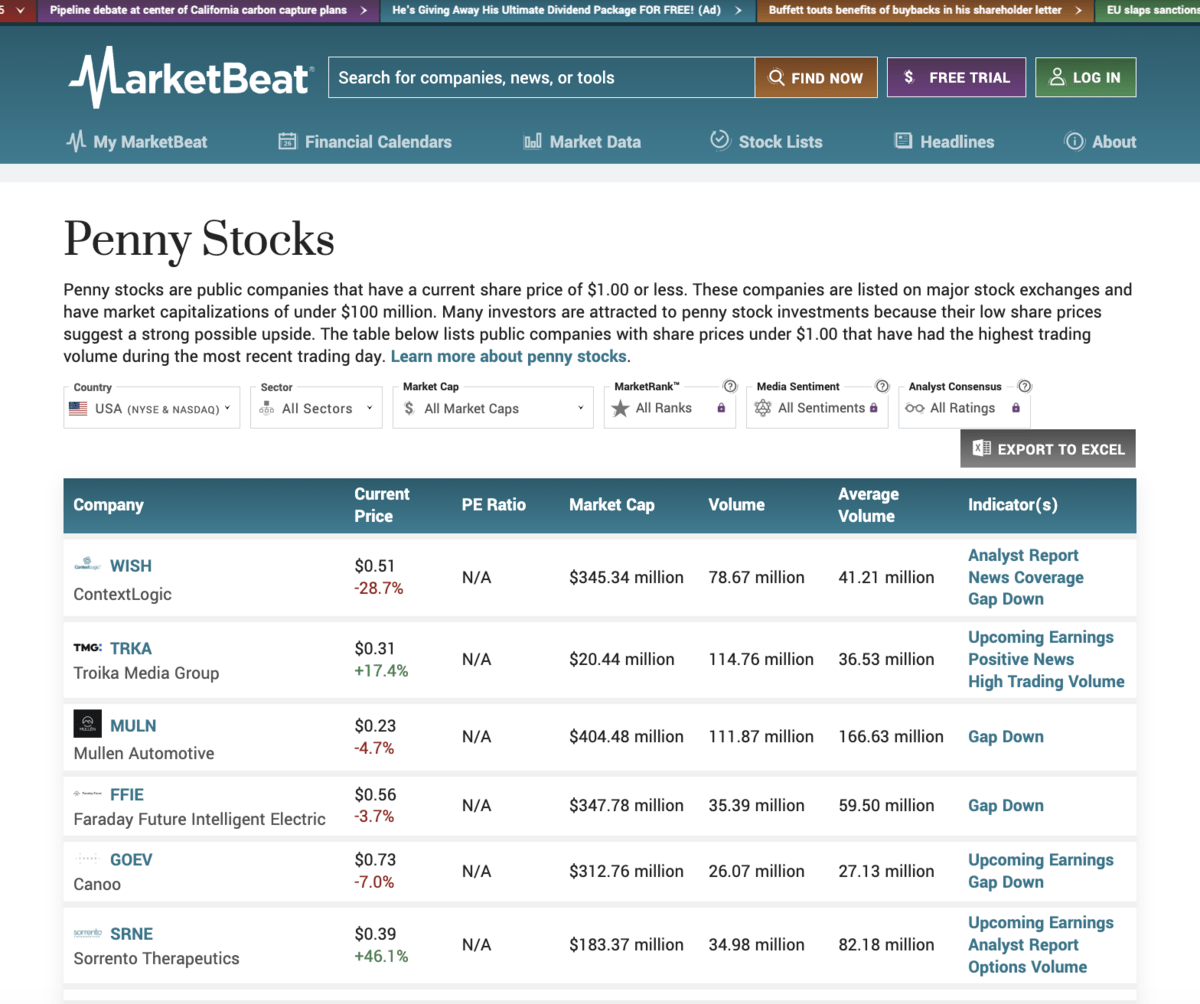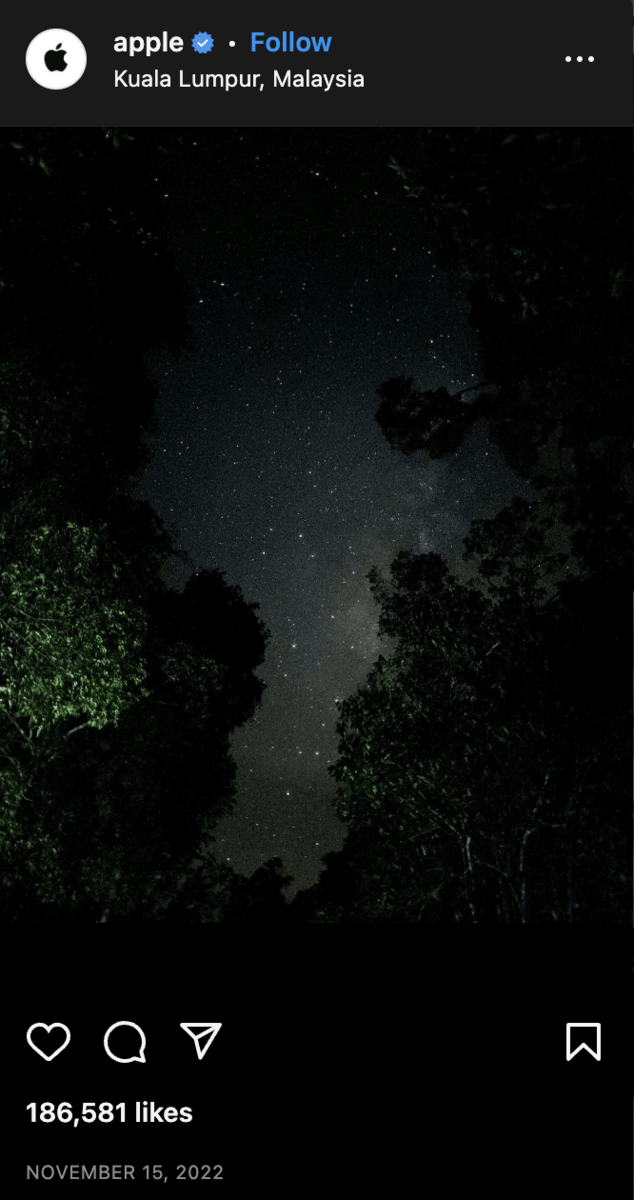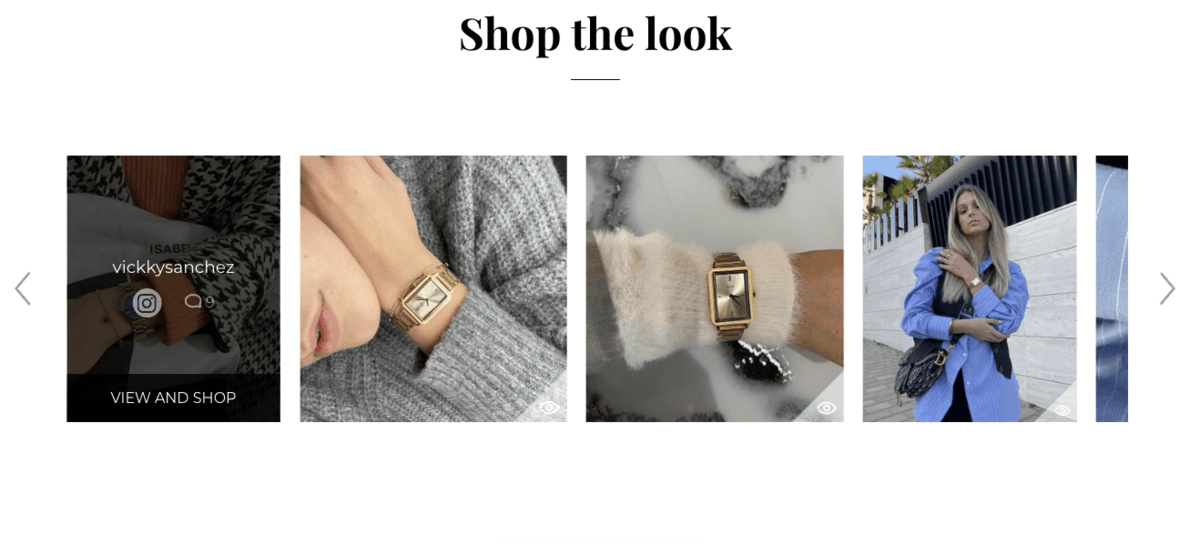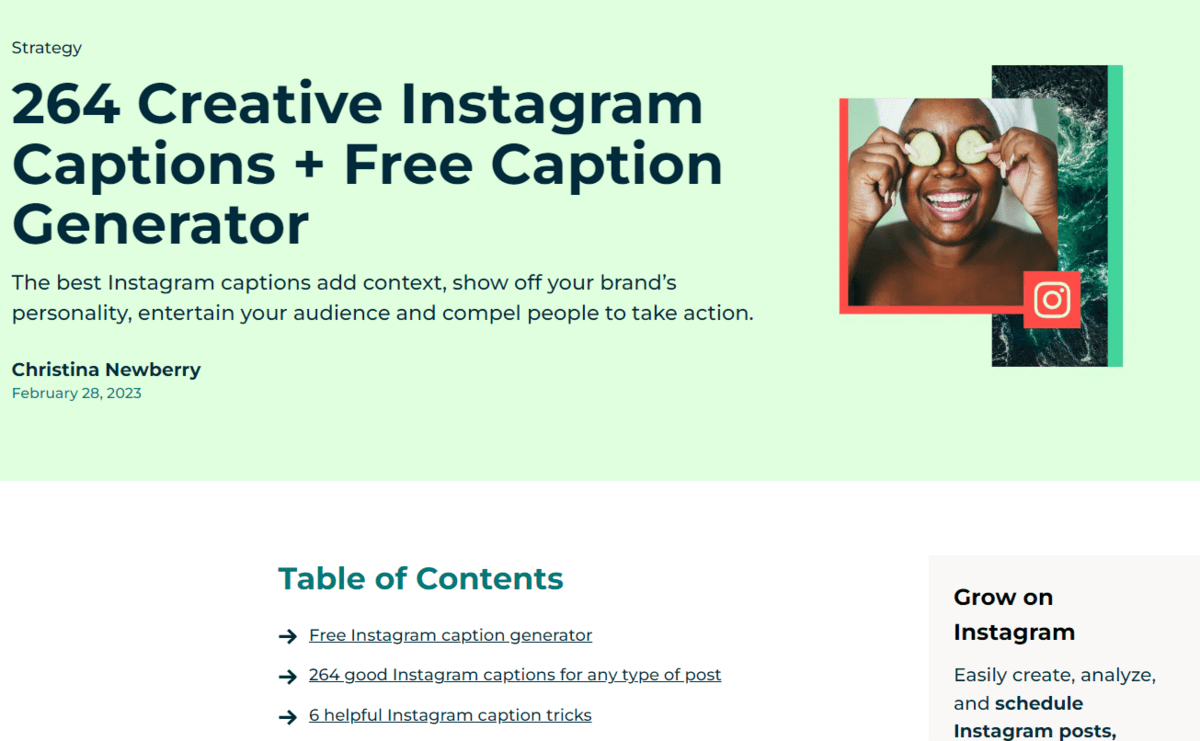Gone are the days when “creating content” meant whipping up a 1,000-word blog post, stuffing in some keywords, and sharing it with your social media following.
Such a simplistic approach doesn’t cut it anymore. You must stay ahead of the competition and satisfy Google’s ever-changing algorithms. But most importantly, you need to attract the attention of your hard-to-please audience.
Difficult? Yes. Impossible? No.
Producing unique content while diversifying your 2023 strategy is the secret to achieving these goals.
In this article, we’ll discuss must-have content types that’ll help you:
- cut through the noise
- drive engagement
- boost conversion rates
- allow you to get the most bang for your marketing buck
Let’s dive right in.
Scale insightful marketing content across the web.
We help you grow through expertise, strategy, and the best content on the web.
1. In-depth guides
Even though video accounts for 65% of internet traffic in 2022, blogging is still alive and kicking. But we’re not talking about your average blog posts that cover a topic without getting into too much detail. The internet is full of underwhelming, half-baked articles with little to no value to their readers.
To differentiate yourself from the crowd, you need in-depth guides that cover a specific topic clearly and comprehensively.
In-depth guides are especially important if you offer a complex product or service. The odds are your potential customers aren’t sure how it works and how it can make their lives better unless you explain it to them.
By crafting ultimate how-to guides, you’ll be able to:
- Address your audience’s pain points and offer them a solution
- Help them understand the value of your product or service and make the most of it
- Establish yourself as an industry leader and a go-to resource
- Boost your online presence and attract high-quality traffic
So, how do you create such unique content that’ll educate and delight your readers? Here are a few tips.
Understand your target audience
Getting to know the people who’ll read your guides is critical. Remember that this type of content is for beginners, so remember to keep it simple.
Use your existing customer data, Q&A websites such as Quora or Reddit, or your competitor’s content to identify your audience’s pain points (questions) and needs. Or conduct a survey to find out their top challenges firsthand.
Avoid industry jargon or complex language to make your content accessible to all readers.
Research the topic
Being an expert on a particular subject matter can make it even more challenging to structure a detailed guide. You might overlook a step in the process because you’ve achieved automaticity or fail to discuss something, believing it’s common knowledge.
That’s why it’s best to outline — write down all the steps, then follow your own instructions, making notes in the process. You can also check similar guides to see whether you need to add something to outperform their quality.
Do keyword research because you don’t want to invest time and effort into content that’ll never appear in search results. Studying the “People Also Ask” feature in Google search results can give you more insight into what to include in your guide.
Add relevant images, screenshots, and videos
Don’t force your readers to imagine your explanations. Instead, use images, screenshots, graphs, 2D animations and videos to illustrate what you’re talking about. Screenshots of complicated steps can significantly improve readers’ comprehension and make your guide more effective. Additionally, visually-oriented content will break up walls of text and allow for better readability. Alternatively, you can use a video presentation maker to include bite-size clips on your blog. One of the benefits of video recordings is that you can go into as much detail as you want on features, benefits, or technical details of your guide, making it easier for the reader.
Going’s step-by-step guide on how to use Google Flights to find cheap flights checks all the boxes:
- It provides screenshots for every step without assuming readers know how to begin their search and where to click next. That way, it accommodates audiences who aren’t particularly tech-savvy.
- The resource is skimmable because of its structure with many subheadings and bullet points.
- There’s also a section for advanced users, making this guide valuable even to seasoned flyers.
- The brand doesn’t refrain from giving out some tips and tricks for their service uses. That way, they demonstrate that their primary goal is to help their audience.

Source: Going
Eachnight’s Best Mattresses of 2023 belongs to a different category. It’s a buyer’s guide geared towards purchase-ready website visitors who need help picking the mattress model that suits their needs and preferences. The brand highlights its credibility by informing readers about two crucial factors:
- First, the guide’s writer is a certified sleep coach.
- Second, a licensed physical therapist fact-checked and medically reviewed the guide.
Although lengthy, this guide is easy-to-read as it’s organized into different categories, with the pros and cons for each model. Back-to-back comparisons also allow for an informed decision-making process.

Source: Eachnight
2. Interactive and personalized content
Nothing says “unique content” more than interactive content. Tools, calculators, infographics, surveys, polls, maps, and other formats personalize the reader experience and encourage audience participation. No wonder it generates two times more engagement than static content.
Unlike traditional blog posts, infographics, or videos, interactive content communicates its message by requiring the audience to provide input. Moreover, an interactive quiz or poll is a fun way to ignite users’ interest and boost engagement.
Also, let’s not forget that people expect content to be entertaining. Interactivity adds this essential component of fun to your efforts and helps you capture website visitors’ attention from the get-go. Interactivity allows you to give your audience a more active role in tailoring content that’s relevant to them. Meanwhile, it’s an excellent way of obtaining high-quality customer insights. People must first share personal information to access and customize their user experience.
When creating interactive content, take the following points into account:
- Have a clear goal and define what you want to achieve. For example, is it to entertain, educate, engage, or convert your audience? This way, you’ll be able to craft content that resonates with them and get the results you’re hoping for.
- Keep things simple. Your interactive content should be user-friendly and intuitive. Otherwise, you risk confusing your audience about what’s in it for them. Instead, be transparent about what they’ll get if they engage with your content.
- Offer immediate feedback, and don’t make your audience work too hard to get their results. Nobody likes long forms and complex processes. So, to keep your visitors engaged and motivated, share the score, result, or output instantly.
Take a cue from the Transparent Labs 1 rep-max calculator, a simple and easy-to-use interactive tool. Their target audience, individuals interested in fitness and exercise, will find this tool useful. There are only a few fields to fill, and the results are available immediately after prospects provide their email addresses, which is a great way to capture leads.

Source: Transparent Labs
The Scrabble Word Finder from UnscrambleX is another example of a super-useful interactive tool that boosts engagement. By creating a go-to resource for people who enjoy playing word games, the brand provides a reason for them to return to the website and stay longer.

Source: Unscramblex
Although MarketBeat’s Penny Stocks guide looks like your standard table, it is, in fact, a regularly updated watchlist. It displays a wealth of valuable information for potential investors. But that’s not all there is to this piece of content. Readers can also select different parameters, such as the country, sector, or market cap, and personalize the output they get.

Source: MarketBeat
3. Case studies
Let’s say you’re in the market for a CRM solution and are weighing your options.
Which of these two vendors would you choose:
- Vendor A, which promises their product will help you boost your lead generation efforts and increase your ROI; or
- Vendor B presents a case study to show how they helped a client like you boost their lead generation by 40% and increase their ROI by 50%.
You’ll probably opt for the latter because they went the extra mile. Instead of bragging about their solution, they substantiated their claims with a data-driven customer success story.
Why would you trust a brand saying, “Our product is the best you can find out there,” if there’s nothing to back this statement up? However, a brand that offers evidence that its product or service has already successfully solved a problem like yours is an entirely different story.
Case studies use real-life scenarios and examples to corroborate your marketing messages by illustrating how your product or service works. This unique content type first highlights a particular customer’s pain points, then explains your process – how to apply the solution. Finally, it talks about tangible results.
Another reason case studies are so powerful lies in the fact that they double as social proof. After all, 95% of people read online reviews before making purchasing decisions.
Case studies are structured and detailed customer testimonials, which is why this content will do wonders for your brand credibility and reputation. Seeing that your existing customers have agreed to take time and advocate your product will instill trust in fence-sitting prospects. It’ll also dispel any doubts they might have. It’s like a seal of approval, which is particularly helpful for high-cost solutions.
It’s an added benefit that case studies are long-form, allowing you to add relevant keywords, optimize them for search engines, and improve your rankings.
Here are some best practices to follow when creating case studies:
- Share data and stats to quantify the impact of your solution on your customer’s success.
- Focus on your customers, their challenges, objectives, and the success they achieved with the help of your product.
- Use a story-telling approach to make the content more relatable and compelling.
- Include images, charts, screenshots, and other visuals to improve readability and illustrate your points.
Codeless’ case study about how they helped AdEspresso establish themselves as thought leaders in the Google Ads content niche is a great example. It provides context so readers can understand the customer’s situation, objectives, and most significant challenges. There are also real stats and numbers to paint a picture of how Codeless’ content creation services made a world of difference for their client’s ranking, link-building, and the number of referring domains.

Source: Codeless
4. User-generated content (UGC)
Only 19% of consumers believe brand-created content is authentic. On the other hand, 80% of people say user-generated content highly influences their purchasing decisions. Based on these numbers, it doesn’t take a rocket scientist to conclude why UGC is a game-changer. These statistics provide an excellent reason to leverage customer-created content, such as videos and reviews that mention your brand or products.
UGC is highly engaging, making customers feel they’re part of your brand’s story, success, and community.
According to Maslow’s Theory of Human Motivation, a sense of belonging is one of five fundamental human needs. Therefore, we have an innate drive to connect with our peers and seek validation from them. By creating and sharing UGC, your customers become members of your community, spark conversations among other members, and get feedback from them. All this fulfills their need to belong and connect with others.
So, when they share an image or video of your product on social media, they interact with your brand and other like-minded people. And you should leverage this psychological concept for your benefit.
Apple’s Instagram profile dedicates itself almost entirely to sharing customers’ photos and videos shot on the iPhone. Sure, it’s an excellent way to showcase what their camera can do. Plus, it also gives a platform for their customers to present their work and get recognition from thousands of their peers.

Source: Instagram
Besides adding another layer of authenticity to your brand, boosting conversions, and promoting brand loyalty, UGC is also cost-effective. Namely, by tapping into the power of digital word-of-mouth, you’ll get high-quality content for free.
Cluse takes leveraging UGC to the next level by enabling a steady stream of user-generated Instagram reels with photos on its homepage. In addition, the brand encourages customers to share photos and videos wearing their watches or jewelry. It even uses this content for the “Shop this look” section. With the help of this clever tactic, Cluse gets a constant influx of fresh, authentic content.

Source: Cluse
5. Listicles
As its name suggests, this type of content is in the form of a list. For example, one study shows that 41% of top-performing articles in 2020 were listicles.
And this popularity comes as no surprise. Readers love lists because:
- It’s easier for our brains to process bite-sized, snackable content than long walls of text.
- They know what to expect. For instance, “9 effective ways to lose weight” tells readers they’ll get clear-cut, skimmable content organized into sections.
- The number in the title communicates that the author organized the content in a logical, easy-to-follow order.
- Complex topics are easier to understand when you break them down into smaller, more manageable parts. “10 Common Questions About Black Holes” is more reader-friendly and suitable for laypeople than “The Science of Black Holes.”
This description brings to mind BuzzFeed-style pieces such as “64 Memes That Will Have Your Cat ROFM (Rolling on the Floor Meowing).” But this format lends itself perfectly to more meaningful content that’ll offer your audience more than light-hearted entertainment.
Here are some tips for creating click-worthy listicles that bring value to your audience:
Pick the right topic that fits the list format.
Narrative content can be challenging to structure into a listicle. So, do keyword research and see whether (and how) your top-ranking competitors did this.
Optimize your listicle for search engines.
Aim for long-tail keywords to attract more targeted, high-quality traffic to your website.
Identify content gaps and missed opportunities in your competitors’ listicles.
Analyze their content, explore their weaknesses, and create a better list to top their efforts. Then, use the People Also Ask feature to get more insights into what searchers want to know about the topic and include this in your content.
Resist the urge to create misleading, clickbaity titles that don’t deliver on their promise.
While sprinkling a bit of intrigue to get your audience to click is okay, ensure your content justifies it by providing valuable information with no fluff.
Hootsuite’s robust listicle that rounds up over 250 great Instagram captions for marketers leaves competitors in the dust. Although lengthy, this resource is reader-friendly because of its conciseness, short sections, and use of screenshots. Plus, it’s scannable and features a helpful table of contents so readers can easily find the information they’re looking for without going through the entire piece. Along with the wealth of Instagram captions, the article also features a free Instagram caption generator and some useful tips for caption writing.

Source: Hootsuite
In closing
In a world where content reigns supreme, differentiating yourself is no easy feat. But with these five unique content types in your content strategy, you’ll leave your audience begging for more.
While it takes time and effort to produce exceptional content that your audience will love, it’s worth its weight in gold in the long run. So, get started on your combination of unique content magic today!



